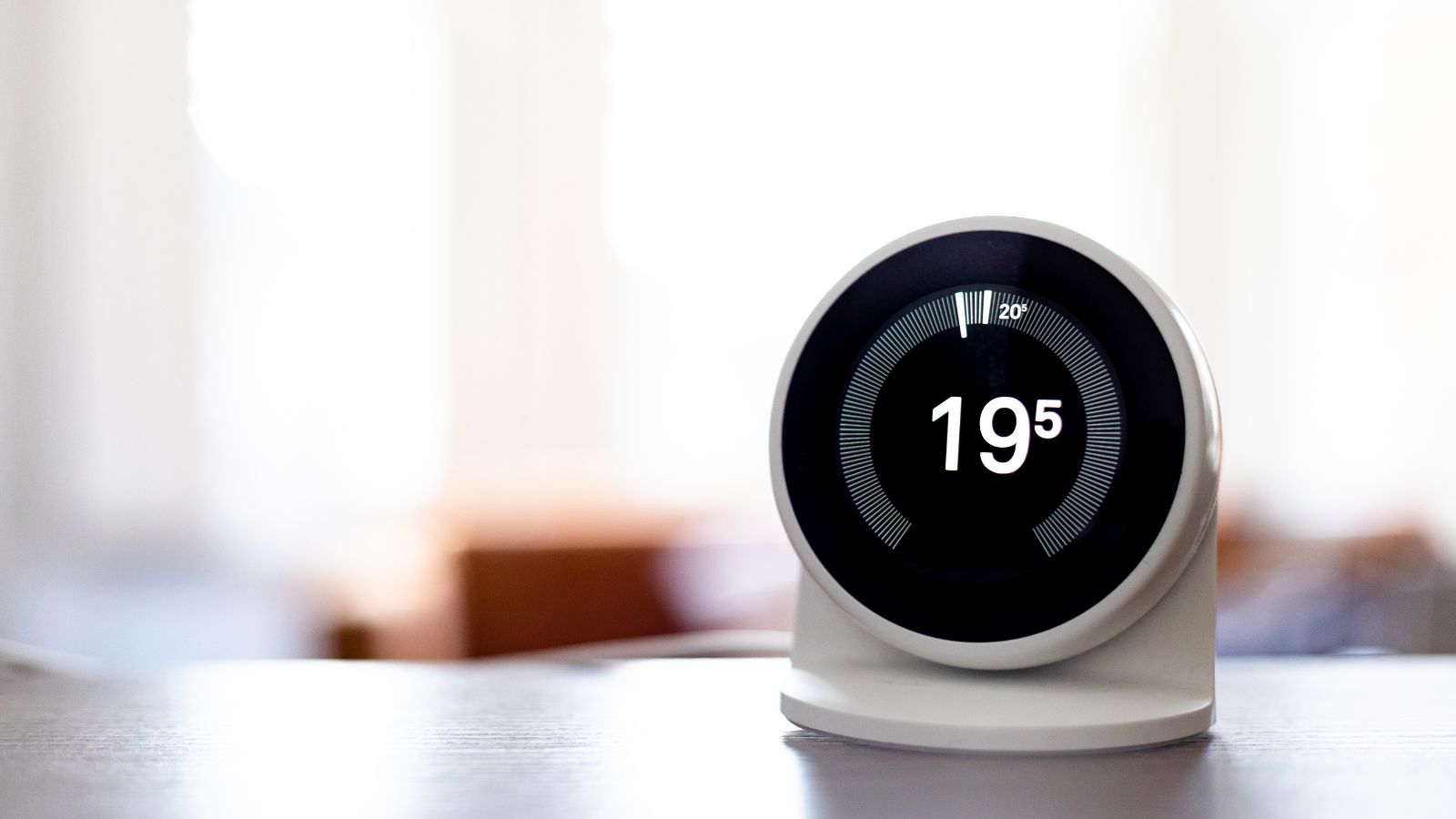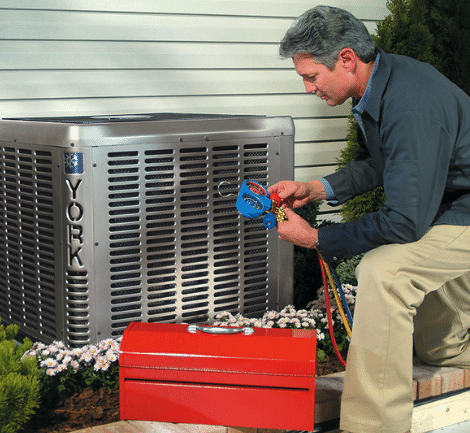The 6 most common thermostat mistakes, and how to fix them
These thermostat mistakes are incredibly costly – both for your wallet and your home


Keeping a home warm in winter starts with your thermostat. Setting it up correctly at the start of the cold season is essential to staying warm – but many of us make some common mistakes that are seriously costing us.
Whether you are looking to cut energy bills or keep a home warm without cranking up the heat, fixing these common thermostat mistakes is essential to keeping your home heating efficient.
These are the six most common thermostat mistakes you might be making when heating your home according to experts, and why they could be wasting your money.
Thermostat mistakes
One of the best ways to lower heating costs in winter is to personalize your thermostat settings, but knowing what to set them to makes all the difference to your bills at the end of the month. Here’s what the experts suggest.

1. Leaving heat-generating appliances near your thermostat
If you turn on your heating system but don't find yourself getting any warmer, it might not just be down to your insulation. Instead, your thermostat may be too close to a heat source, says Brad Roberson, president at Aire Serv, a Neighborly company, causing it to switch off prematurely before it has the chance to warm the rest of your home. It is best to keep it away from heat vents and other appliances for the most accurate results, he recommends.

Brad Roberson was named president of Aire Serv, a trusted name in the field of heating and air conditioning installation, maintenance, and repair, by Neighborly in 2023. Brad has almost 20 years of experience.
2. Setting the thermostat too high or too low
When personalizing your thermostat settings, it is pretty easy to set it too high or too low accidentally and not realize it, shares Kevin Price, HVAC expert at AC and Refrigeration.
‘While it's tempting to bump heat to 75 degrees or A/C to 65 degrees, this leads to temperature swings and unnecessary energy use,’ he begins. ‘Keep settings within 68-72F for comfort and to save money at home.’
Design expertise in your inbox – from inspiring decorating ideas and beautiful celebrity homes to practical gardening advice and shopping round-ups.
3. Not changing the thermostat when you go out
Although it is nice to set your heating to come on just before you get back from a long day out in the cold, it is important to set your heating off when out all day, or learn what temperature to set the thermostat when on winter break, advises Brad Roberson, HVAC expert:
‘It’s generally more energy-efficient to make adjustments based on the household’s schedule. For instance, lowering the temperature when sleeping or away from home and raising it when awake or returning can lead to cost savings and better energy efficiency.
‘Programmable or smart thermostats allow for pre-set schedules, making it easier to regulate temperatures to meet the family’s needs and save on heating or cooling costs when not necessary.’
4. Turning up the thermostat to warm your home quicker
When trying to heat your home more quickly, turning up the thermostat won't do the trick – contrary to popular belief, Brad Roberson, HVAC expert, continues.
‘When adjusting the thermostat to heat or cool a room, it won’t expedite the process to make the room reach the desired temperature faster. The thermostat’s purpose is to signal the HVAC system to operate until the set temperature is achieved. Whether you raise or lower the temperature setting doesn’t impact the speed at which the system heats or cools the room; it mainly affects how long the system operates to reach the designated temperature, actually costing you more than having a slightly lower temperature for longer.’
5. Leaving your heating on low constantly
It is common practice for people to set their thermostat to a low setting and run it constantly to maintain a constant ambient temperature. This is incredibly costly, however, and can even raise the necessary costs of even the cheapest heating type to run, reveals Dave Roebel, HVAC expert at Northeast Mechanical Services:
‘Keeping the thermostat at a low level constantly, even when you are away or during the night, can lead to unnecessary energy consumption. It is more efficient to adjust the temperature based on your occupancy and comfort needs.
‘I instead recommend using a programmable thermostat or a smart thermostat to set different temperature levels for different times of the day. Lower the temperature when you are away or sleeping and raise it when you are active and need more warmth.’
However, consider setting your thermostat to a consistent temperature in winter if dealing with condensation, mold or mildew, as this will prevent a damp environment for mold spores to thrive in. But, keep it between 68-72° Fahrenheit to avoid exorbitant bills.

Dave Roebel is the Owner of Northeast Mechanical Services, a provider of mechanical solutions catering to a wide range of industries. Their products and services include expert installation, maintenance, and repair of HVAC equipment.
6. Not maintaining the thermostat
When preparing a house for cold weather, it is essential to check in with your thermostat and maintain it to ensure it is running correctly, warns Dave Roebel, HVAC expert. ‘Neglecting regular maintenance of the thermostat can lead to inaccurate temperature readings and inefficient operation,’ he says.
‘Clean the thermostat regularly to remove dust and debris that may affect its performance, and check the batteries if your thermostat is battery-powered and replace them as needed. If you notice any issues with temperature control, consider having a professional inspect and calibrate the thermostat.’
FAQs
What is the most common problem with thermostats?
One of the most common thermostat problems is them giving incorrect temperature readings due to their location in your home (i.e. they are too close to a heat-generating appliance or a cold, drafty spot) or they have become clogged up with dust and grime, affecting its efficiency. It pays to know where a thermostat should be placed.
How can you check if a thermostat is working properly?
You can check if a thermostat is working properly by checking if your heating system switches on when you turn the thermostat on. You can also use an additional external thermometer to monitor the internal temperature around the thermostat. If the numbers don’t line up, your thermostat may need recalibrating.
There is more to just avoiding some thermostat mistakes to keeping your home warm in winter without breaking the bank.
Christine Ciavardini of MD Energy Advisors, recommends that ‘everyone check with their local utility for energy efficiency programs and incentives. Many utilities offer free energy efficiency items to their ratepayers, complimentary energy efficiency audits, and generous incentives and rebates for equipment replacement,’ she says.

Chiana has been at Homes & Gardens for two years and is our resident 'queen' of non-toxic living. She spends most of her time producing content for the Solved section of the website, helping readers get the most out of their homes through clever decluttering, cleaning, and tidying tips. She was named one of Fixr's top home improvement journalists in 2024.